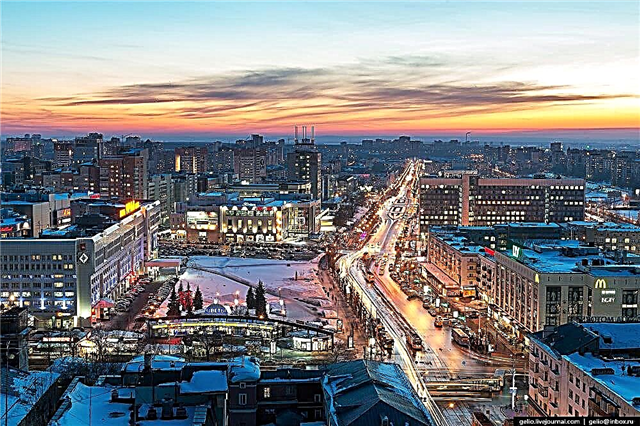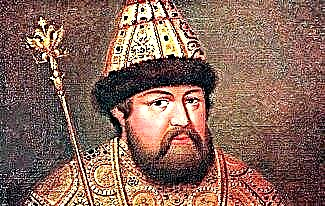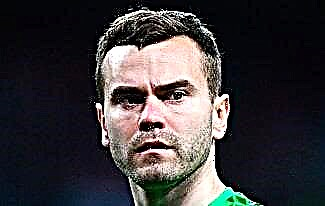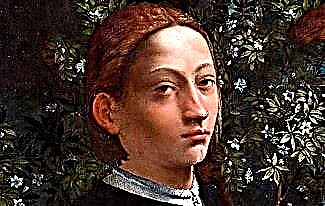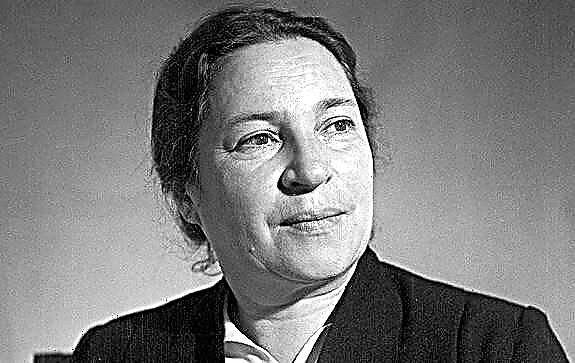Simon Vasilievich Petlyura (1879-1926) - Ukrainian military and political leader, head of the Directory of the Ukrainian People's Republic in the period 1919-1920. Chief ataman of the army and navy.
There are many interesting facts in the biography of Simon Petlyura, which we will discuss in this article.
So, before you is a short biography of Petliura.

Biography of Simon Petlyura
Simon Petlyura was born on May 10 (22), 1879 in Poltava. He grew up and was brought up in a large and poor cabman family. As a teenager, he decided to become a priest.
In this regard, Simon entered the theological seminary, from where he was expelled from the last year for his passion for political activity. At the age of 21, he became a member of the Ukrainian Party (RUE), remaining a supporter of left-nationalist views.
Soon Petlyura began working as a journalist for the Literary-Scientific Bulletin. The magazine, whose editor-in-chief was Mikhail Hrushevsky, was published in Lvov.
The first work of Simon Petliura was devoted to the state of public education in Poltava. In subsequent years of his biography, he worked in publications such as "Word", "Peasant" and "Good News".
Politics and war
In 1908, Petliura settled in Moscow, where he continued to pursue self-education. Here he made his living by writing historical and political articles.
Thanks to his erudition and erudition, Simon was accepted into the circle of Little Russian intellectuals. It was then that he was fortunate enough to meet Grushevsky.
Reading books and communicating with educated people, Petliura became an even more literate person, despite the lack of higher education. The very same Grushevsky helped him to take the first steps in politics.
The guy found the First World War (1914-1918) in the position of deputy authorized representative of the All-Russian Union of Zemstvos and Cities. At this time of the biography, he was engaged in the supply of the Russian troops.

In this post, Simon Petlyura often communicated with soldiers, having managed to win their respect and authority. This allowed him to very successfully conduct political campaigning in the Ukrainian ranks.
Petliura met the October Revolution in Belarus, on the Western Front. Thanks to his oratorical skills and charisma, he managed to organize Ukrainian military councils - from regiments to the whole front. Soon, his associates promoted him to the leadership of the Ukrainian movement in the army.
As a result, Simon turned out to be one of the key figures in Ukrainian politics. Becoming the secretary for military affairs of the 1st Ukrainian government, headed by Volodymyr Vynnychenko, he set about transforming the army.
At the same time, Petliura often spoke at party congresses, where he promoted his views. In particular, he delivered speeches on "On the nationalization of the army" and "On issues of education." In them, he urged delegates to support the program regarding the transition of training of Ukrainian soldiers in their native language.
In addition, Simon promoted the idea of translating all military regulations into Ukrainian, as well as carrying out reforms in military educational institutions located on the territory of Ukraine. In this regard, he had many nationalist supporters.
In December 1918, the troops formed by Petliura took control of Kiev. He assumed power in mid-December, but his rule lasted only a month and a half. On the night of February 2, 1919, the man fled the country.
When power was in the hands of Simon, he lacked the experience in how to dispose of it. He counted on support from France and Great Britain, but then these countries had no time for Ukraine. They were more interested in the distribution of territories after the end of the war.
As a result, Petliura did not have a clear plan for the further development of the situation. Initially, he issued a decree on the capitalization of commercial banks, but after 2 days he canceled it. During several months of his reign, he emptied the treasury, hoping for material and military European support.

On April 21, 1920, Simon, on behalf of the UPR, signed an agreement with Poland on joint resistance to the Soviet army. According to the agreement, the UPR undertook to give Galicia and Volyn to the Poles, which was an extremely negative event for the country.
Meanwhile, the anarchists were getting closer and closer to Kiev, while the Bolshevik troops were advancing from the east. Under the fear of dictatorship, the confused Simon Petliura decided to flee Kiev and wait until everything calms down.
In the spring of 1921, after the signing of the Riga Peace Treaty, Petliura immigrated to Poland. A couple of years later, Russia demanded that the Poles extradite the Ukrainian nationalist. This led to the fact that Simon had to flee to Hungary, and then to Austria and Switzerland. In 1924 he moved to France.
Personal life
When Petliura was 29 years old, he met Olga Belskaya, who had similar views as he did. As a result, young people began to communicate often, and then cohabit together. In 1915, the lovers officially became husband and wife.

In this marriage, the couple had their only daughter, Lesya. In the future, Lesya will become a poetess, dying of tuberculosis at the age of 30. It is curious that in 1937, during the Soviet "purges", 2 Petliura's sisters, Marina and Feodosia, were shot.
The murder of Petliura
Simon Petliura died on May 25, 1926 in Paris at the age of 47. He was killed by an anarchist named Samuel Schwarzburd, who fired 7 bullets at him in the doorway of a bookstore.
According to Schwarzburd, he killed Petliura on the basis of revenge associated with the Jewish pogroms of 1918-1920 organized by him. According to the Red Cross Commission, approximately 50,000 Jews were killed in the pogroms.
Ukrainian historian Dmitry Tabachnik said that up to 500 documents are stored in the German archives, proving the personal involvement of Simon Petliura in the pogroms. The historian Cherikover is of the same opinion. It should be noted that the French jury acquitted Petliura's murderer and released him.
Photo by Simon Petlyura







